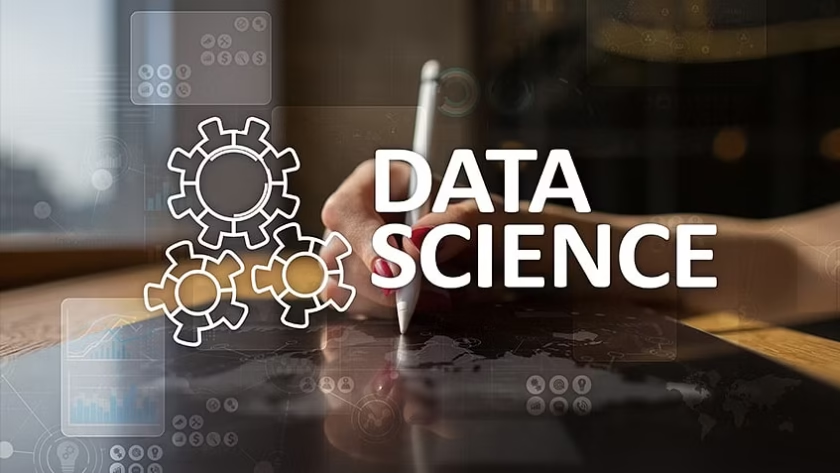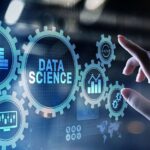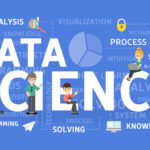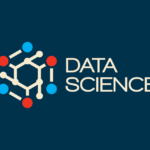The rise of artificial intelligence (AI) has led to significant advances in numerous fields, transforming how we live, work, and interact with the world. Central to the success of AI are the fields of Machine Learning (ML) and Data Science, which provide the tools and techniques to analyze vast amounts of data, make predictions, and automate complex tasks. As these technologies continue to evolve, their impact on industries such as healthcare, finance, marketing, and transportation is profound, offering opportunities for growth, efficiency, and innovation.
In this article, we’ll explore the fundamental concepts of Machine Learning and Data Science, examine how they are driving AI advancements, and discuss the future implications of these fields on society and industries.
1. Understanding Machine Learning and Data Science
Before diving into the future of AI, it’s important to distinguish between Machine Learning (ML) and Data Science and understand how they work together to enable AI systems.
What is Machine Learning?
Machine Learning is a subset of AI that focuses on the development of algorithms that allow computers to learn from and make decisions based on data. Instead of explicitly programming a computer to perform specific tasks, ML models learn patterns and insights from data, enabling them to make predictions or take actions without human intervention.
There are three main types of machine learning:
- Supervised Learning: In this method, the algorithm learns from labeled data, i.e., data where both the input and output are known. The goal is to predict the output for unseen inputs. A common example is predicting house prices based on historical data (input features like location, size, etc.).
- Unsupervised Learning: Here, the algorithm is given data without labels and must find hidden patterns or relationships within the data. Clustering and anomaly detection are common unsupervised learning techniques.
- Reinforcement Learning: In this approach, the algorithm learns by interacting with an environment and receiving feedback in the form of rewards or penalties. This type of learning is commonly used in robotics and game-playing AI systems, like AlphaGo.
What is Data Science?
Data Science is a broader field that encompasses various techniques, including statistics, data analysis, and machine learning, to extract knowledge and insights from structured and unstructured data. Data scientists collect, clean, and analyze large datasets, utilizing machine learning algorithms and statistical methods to create models that can inform decision-making.
Key components of data science include:
- Data Collection and Cleaning: Gathering data from diverse sources (e.g., sensors, websites, and social media) and ensuring that it is accurate, complete, and ready for analysis.
- Exploratory Data Analysis (EDA): Analyzing datasets to identify patterns, trends, and outliers. This step often involves visualizations such as graphs and charts.
- Modeling and Algorithms: Using machine learning techniques to create models that can make predictions, classify data, or identify trends.
- Deployment and Maintenance: Deploying the data models into production environments where they can be used in real-time applications, and maintaining and updating these models to ensure accuracy over time.
Together, Machine Learning and Data Science enable the creation of powerful AI systems that can automate tasks, make predictions, optimize processes, and provide insights that were previously unimaginable.
2. Machine Learning and Data Science in AI: Key Applications
Machine learning and data science are the engines behind many AI applications that have transformed industries. Here are some key areas where these technologies are making an impact:
Healthcare
AI, powered by machine learning and data science, is revolutionizing the healthcare industry by enabling faster diagnoses, personalized treatment, and drug discovery.
- Medical Imaging: Machine learning algorithms can analyze medical images like X-rays, MRIs, and CT scans to detect early signs of diseases such as cancer, diabetes, and heart conditions with higher accuracy than human doctors.
- Predictive Analytics: Data science models can predict patient outcomes, helping doctors identify at-risk individuals and take preventative measures before critical conditions arise.
- Drug Discovery: Machine learning models can sift through vast amounts of biological and chemical data to discover potential drug candidates, accelerating the time it takes to bring new drugs to market.
Finance
The financial sector has widely adopted machine learning and data science to improve decision-making, mitigate risks, and optimize processes.
- Fraud Detection: Machine learning algorithms can detect fraudulent activities in real time by analyzing transaction patterns and flagging unusual behavior. This improves security and reduces losses for financial institutions.
- Algorithmic Trading: ML models can analyze market data and execute trades at high speeds, making real-time decisions based on current trends and historical data, leading to more profitable trading strategies.
- Credit Scoring: Data science techniques are used to assess credit risk by analyzing a person’s financial history, transaction behavior, and other relevant factors, leading to more accurate credit scores.
Marketing and Customer Insights
Machine learning and data science enable marketers to understand customer behavior, personalize offers, and improve the customer experience.
- Customer Segmentation: Machine learning algorithms can segment customers based on behavior, preferences, and demographics, allowing businesses to tailor their marketing strategies to specific groups.
- Recommendation Engines: Companies like Amazon and Netflix use machine learning to recommend products and media content to users based on their past interactions, improving customer satisfaction and boosting sales.
- Sentiment Analysis: Data science is used to analyze social media and online content to understand customer sentiment toward brands, products, or services, helping companies adjust their strategies accordingly.
Autonomous Vehicles
Self-driving cars are one of the most talked-about applications of AI, relying heavily on machine learning and data science to navigate and make real-time decisions.
- Computer Vision: ML algorithms process data from cameras and sensors to interpret the car’s surroundings, identify obstacles, and recognize road signs, pedestrians, and other vehicles.
- Decision Making: Data science is used to make split-second decisions based on real-time data, ensuring the vehicle can respond to dynamic conditions like traffic, weather, and accidents.
Supply Chain and Logistics
Machine learning and data science are also transforming how companies manage their supply chains, optimizing routes, reducing waste, and improving efficiency.
- Demand Forecasting: Data science models predict consumer demand patterns, helping companies optimize inventory management and avoid stockouts or overstocking.
- Route Optimization: ML algorithms analyze traffic data, weather patterns, and delivery schedules to find the most efficient delivery routes, reducing fuel consumption and costs.
- Predictive Maintenance: By analyzing sensor data from equipment, machine learning can predict when machinery is likely to break down, enabling proactive maintenance and reducing downtime.
3. The Future of Machine Learning, Data Science, and AI
As machine learning and data science continue to evolve, their potential applications will expand even further, leading to advancements that could change industries and society in profound ways.
Advancements in Explainable AI (XAI)
One of the biggest challenges with AI today is the “black-box” nature of many machine learning models. These models can make accurate predictions, but it’s often unclear how they arrived at their conclusions. In the future, there will be an increased focus on Explainable AI (XAI), which aims to make AI decision-making processes more transparent and understandable.
By improving transparency, XAI will help build trust in AI systems, particularly in critical areas like healthcare, finance, and criminal justice, where decisions have significant consequences.
Automation and the Workforce
AI and machine learning have the potential to automate a wide range of tasks, from data entry and customer service to complex decision-making processes. While this can increase efficiency and productivity, it also raises concerns about job displacement.
However, the future of work may involve humans working alongside AI. Instead of replacing jobs, AI could augment human capabilities, allowing workers to focus on higher-level tasks that require creativity, emotional intelligence, and complex problem-solving.
The Rise of Edge Computing
As the Internet of Things (IoT) grows and devices generate increasing amounts of data, there will be a greater emphasis on edge computing—processing data closer to the source rather than sending it to centralized cloud servers. This will allow for faster decision-making, reduced latency, and more efficient AI systems.
Edge AI will be critical in industries like autonomous vehicles, industrial automation, and healthcare, where real-time processing is essential.
Ethical Considerations and Data Privacy
With the growing influence of AI, machine learning, and data science, ethical concerns surrounding privacy, bias, and fairness will become even more pressing. Ensuring that AI systems are developed responsibly and that data is used ethically will be a major focus of the future.
For instance, biased data can lead to biased machine learning models, which may perpetuate discrimination in areas like hiring, lending, and criminal justice. As AI technologies advance, developing frameworks and regulations to ensure fairness, accountability, and transparency will be essential.
Conclusion: A Future Driven by Data
Machine learning and data science are undeniably unlocking the future of artificial intelligence, transforming industries and society in ways that were once unimaginable. From healthcare and finance to marketing and logistics, the impact of these technologies is far-reaching and continues to expand.
As the field of AI continues to grow, it will open up new opportunities for innovation and efficiency, but it also comes with significant ethical and societal challenges. Balancing technological progress with responsible use and ethical considerations will be key to ensuring that AI serves the greater good.
For businesses and individuals alike, staying abreast of the advancements in Machine Learning and Data Science will be essential to remaining competitive and prepared for the future. The key to unlocking the full potential of AI lies in harnessing the power of data, while also ensuring transparency, fairness, and security in its use.
Key Takeaways:
- Machine Learning and Data Science are the foundations of modern AI technologies, allowing systems to learn from data and make decisions autonomously.
- These technologies are transforming industries like healthcare, finance, marketing, and transportation by improving efficiency, decision-making, and customer experience.
- The future of AI will involve innovations in Explainable AI (XAI), automation, edge computing, and ethical considerations.
- As AI continues to advance, addressing issues of data privacy, bias, and accountability will be crucial to ensuring its responsible use.




